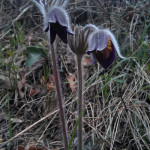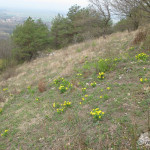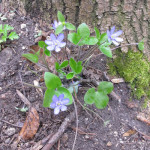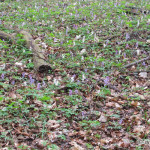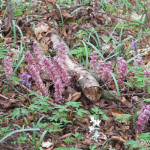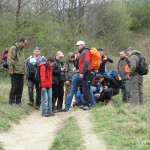The early spring arrival
Sunday, March 23, 2014
As in previous year, we planned a walk in early April focusing on the first spring flowers also in this one. In both cases, the weather showed us that plans are plans, but nature has the final say. Last year, extremely long winter rich on snowfalls caused that in the beginning of April we could only dig the first signs of flowers from under the snow. This year the first flowers began to bloom in early March. To catch the early spring flowers blooming, we decided to include one additional walk last weekend.
Our aim was Devínska Kobyla, site, inter alia, rich also in vegetation. Its unique location between the Pannonian lowlands and mountainous Carpathian region, the proximity of the rivers Danube and Morava and last but not least, the immediate connection to human dwellings and gardens results in an exceptionally diverse and species-rich vegetation. Our route went from Devín along the blue tourist trail and later along the informational path to Devínska Nová Ves. Thus we had the opportunity to visit a wide variety of habitats from open grasslands, forest steppe, through the groups of small trees, mature forests and to the dense stands of shrubs.
Early after the beginning of our trek we could admire Pasque Flowers at small rocky meadows near Devín. In comparison with the period two weeks ago almost all Greater Pasque Flowers were gone and their place was taken by Small Pasque Flowers. We had the opportunity to observe them throughout all our route in extremely high numbers this time. Later followed meadows full of blooming Yellow Pheasant´s Eyes and violets, liverworts and Grape-hyacinths hidden in shadows. In the forest section Fumeworts dominated in the undergrowth. Among them we discovered the first Yellow Anemones and we examined exotic looking Purple Toothworths. There we managed to spot also the latest Snowdrops.
We saw several oil beetles (Meloe sp.) – large black beetles with metallic luster typical for this place. They feed on flowers and in spring flower lovers are often terrified by a view on a group of oil beetles feeding on beautiful fragile plants, such as Pasque Flowers. Also we witnessed such a spectacle. In addition to oil beetles we observed crickets (Gryllus campestris) in the openings of their burrows. Finally we stopped at Sandberg and said a few words about the geological and paleonthological importance of the site. But that is another topic for another walk. We are looking forward to you again!
List of observed plants in bloom:
Violets (Viola sp.)
Fumewort (Corydalis sp.)
Purple Toothwort (Lathraea squamaria)
Yellow Anemone (Anemone ranunculoides)
Grape-hyacinth (Muscari sp)
Yellow Pheasant ´s Eye (Adonis vernalis)
Small Pasque Flower (Pulsatilla pratensis)
Greater Pasque Flower (Pulsatilla grandis)
Lungwort (Pulmonaria sp.)
Liverwort (Hepatica nobilis)
Dwarf Iris (Iris pumila)
Greater Stitchwort (Stellaria media)
Red Dead-nettle (Lamium purpureum)
Snowdrop (Galanthus nivalis)
Cowslip (Primula veris)
Spring Pea (Lathyrus vernus)
Cornelian Cherry (Cornus mas)
Dandelion (Taraxacum officinale)
Globe Daisy (Globularia sp.)
Dog´s Mercury (Mercurialis perennis)



